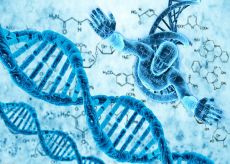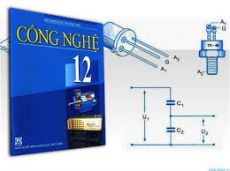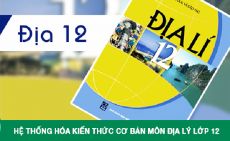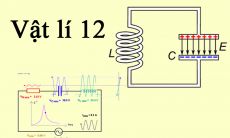Read the following passage and mark the letter A, B, C, or D on your answer sheet to indicate the correct answer to each of the questions from 36 to 42.
Unlike these fish, which are actually extinct, the coelacanth is a type of fish that was believed to be extinct. However, an unexpected twentieth-century rediscovery of living coelacanths has brought about a reassessment of the status of this prehistoric sea creature that was believed to have long since disappeared from the Earth.
From fossil remains of the coelacanth, palaeontologists have determined that the coelacanth was in existence around 350 million years ago, during the Palaeozoic Era, more than 100 million years before the first dinosaurs arrived on Earth. The most recent fossilized coelacanths date from around 70 million years ago, near the end of the Mesozoic and near the end of the age of dinosaurs. Because no fossilized remnants of coelacanths from the last 70 million years have been found, the coelacanth was believed to have died out around the same time as the dinosaurs. The prehistoric coelacanth studied by palaeontologists had distinctive characteristics that differentiated it from other fish. It was named for its hollow spine and was known to have been powerful carnivores because of its many sharp teeth and a special joint in the skull that allowed the ferocious teeth to move in coordination with the lower jaw. It also had a pair of fins with unusual bony and muscular development that allowed the coelacanth to dart around the ocean floor. These fins also enable the coelacanth to search out prey trying to hide on the ocean bottom.
In 1983, a living specimen of the coelacanth was discovered in the catch of a fishing boat off the coast of South Africa, and since then numerous other examples of the coelacanth have been found in the waters of the Indian Ocean. This modern version of the coelacanth is not exactly the same as its prehistoric cousin. Today’s coelacanth is larger than its prehistoric relative, measuring up to six feet in length and weigh up to 150 pounds. However, the modern version of the coelacanth still possesses the characteristic hollow spine and distinctive fins with their unusual bony and muscular structure.
Câu 36 : What is the most suitable title for the passage?
Suy nghĩ và trả lời câu hỏi trước khi xem đáp án
Lời giải:
Báo saiB. Đáng ngạc nhiên là loài cá không bị tuyệt chủng
Câu 37 : The word “determined” in paragraph 2 is closest in meaning to ______.
Suy nghĩ và trả lời câu hỏi trước khi xem đáp án
Lời giải:
Báo saidetermined = confirmed: kiên định
Câu 38 : According to paragraph 2, why was coelacanth believed to have died out at the same time as the dinosaurs?
Suy nghĩ và trả lời câu hỏi trước khi xem đáp án
Lời giải:
Báo saiDẫn chứng: The most recent fossilized coelacanths date from around 70 million years ago, near the end of the Mesozoic and near the end of the age of dinosaurs.
Câu 39 : According to the passage, why are scientists sure that the prehistoric coelacanth was a flesh-eater?
Suy nghĩ và trả lời câu hỏi trước khi xem đáp án
Lời giải:
Báo saiDẫn chứng: It was named for its hollow spine and was known to have been powerful carnivores because of its many sharp teeth and a special joint in the skull that allowed the ferocious teeth to move in coordination with the lower jaw.
Câu 40 : The word “ferocious” in paragraph 2 is closest in meaning to ______.
Suy nghĩ và trả lời câu hỏi trước khi xem đáp án
Lời giải:
Báo saiferocious = fierce: hung dữ
Câu 41 : The word “it” in paragraph 2 refers to ______.
Suy nghĩ và trả lời câu hỏi trước khi xem đáp án
Lời giải:
Báo saiDẫn chứng: The prehistoric coelacanth studied by palaeontologists had distinctive characteristics that differentiated it from other fish. It was named for its hollow spine and was known to have been powerful carnivores because of its many sharp teeth and a special joint in the skull that allowed the ferocious teeth to move in coordination with the lower jaw. It also had a pair of fins with unusual bony ...
Câu 42 : What is NOT true about the prehistoric coelacanth, according to the passage?
Suy nghĩ và trả lời câu hỏi trước khi xem đáp án
Lời giải:
Báo saiDẫn chứng: Today’s coelacanth is larger than its prehistoric relative, measuring up to six feet in length and weigh up to 150 pounds.
Đề thi thử THPT QG năm 2021 môn Tiếng Anh
Trường THPT Phan Văn Trị












